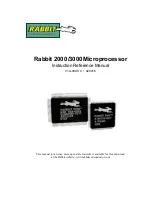NXP Semiconductors
UM10301
User Manual for PCF85x3, PCF85x63, PCA8565, PCF2123, and
PCA21125
UM10301
All information provided in this document is subject to legal disclaimers.
© NXP Semiconductors N.V. 2015. All rights reserved.
User manual
Rev. 2.1 — 23 July 2015
44 of 54
The timer counts down from a software-loaded 8-bit binary value, n. Loading the counter
with 0 effectively stops the timer. Values from 1 to 255 are valid. When the counter
reaches 1, the countdown Timer Flag (TF) will be set and the counter automatically re-
loads and starts the next timer period. The timer has two operating modes, TI and TP. If
the timer interrupt is enabled, the bit TI/TP determines the operating mode. For more
details see below. Reading the timer will return the current value of the countdown
counter (see Fig 20).
If a new value of n is written before the end of the current timer period, then this value will
take immediate effect. It is not recommended (especially when using the faster time
source clocks) to change n without first disabling the counter. The counter is disabled by
setting Timer Enable TE = 0. The update of n is asynchronous to the timer clock,
therefore changing it without setting TE = 0 may result in a corrupted value loaded into
the countdown counter which results in an undetermined countdown period for the first
period. However, the probability of this happening depends on the selected timer source
clock. If the timer clock is not first stopped then there is a possibility that the timer clock
and the interface clock which is loading the countdown timer could arrive at the same
time. This may corrupt the countdown value. With a 1-minute clock (1/60 Hz) this is
unlikely to happen, especially when the application software waits for the timer to trigger
and then straight away sets a new value for n. As long as this new value is written within
1 minute here, there is no problem. The same reasoning is valid for the other timer
source clocks but obviously there is much less time to do so. If the 1-second clock is
selected this would work too if the microcontroller communicating with the RTC is fast.
For faster timer source clocks it gets unreliable and should be avoided.
Also in the case where the timer clock and the interface clock arrive at the same time
which may corrupt the first count down value, the countdown value n will however be
correctly stored and correctly loaded on subsequent timer periods.
When starting the timer for the first time, the first period will have an uncertainty which is
a result of the enable instruction being generated from the interface clock (I
2
C or SPI)
which is asynchronous from the timer source clock. Subsequent timer periods will have
no such delay. Therefore only the first timer period will exhibit this uncertainty. The
amount of delay for the first timer period will depend on the chosen source clock, see
Table 11. First period delay for timer counter value n
Timer source clock
minimum timer period
maximum timer period
4096 Hz
N
n + 1
64 Hz
N
n + 1
1 Hz
(n-1) + 1/64 Hz
n + 1/64 Hz
1/60 Hz
(n-1) + 1/64 Hz
n + 1/64 Hz
When reading the timer, the current countdown value is returned instead of the initial
value n. For accurate read back of the countdown value, the SPI or I
2
C bus clock (SCL)
must be operating at a frequency of at least twice the selected timer clock. Since it is not
possible to freeze the countdown timer counter during read back, it is recommended to
read the register twice and check for consistent results.

















